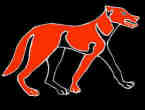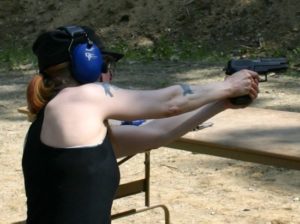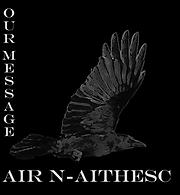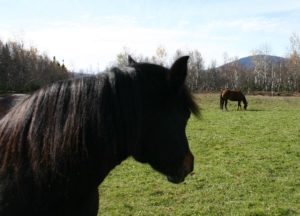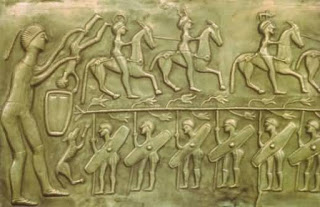If you find this article helpful, please remember this was work to put together and I have animals to feed and vet.
….at least I think She does
I mean, there don’t seem to be many, not seriously focused, at least. So it has been a long running annoyance for me that I keep seeing so many “The Morrígan calls more than warriors” blogs and so many people stating “unlike most of Her followers I’m not a warrior.” Because, seriously, where are all of these “most followers” who are warriors that you speak of? Because they seem rather scarce to me. Oh, I know a few seriously walking a warrior pat, but very few. Some, of course, may not be heavy social media users, but that still means there are very few if the ratio is the same for all. So, I hate to break it to you non-warriors, but you appear to be the actual majority not the exception. And I am not saying you have to be, but please stop talking about how many warriors there are because it’s making me feel extra lonely when I know otherwise. ;p
Of course, some fledgling warriors may have gotten lost on another path because everyone jumped up to tell them they didn’t have to be a warrior? Because it seems that that that response is common. That the first time anyone tells others they feel called, the first thing everyone says is “you don’t have to be a warrior.” Never, “well, let’s explore the options” and then include warrior as one. Even if someone asks what warrior might mean in Her service, they get a lot of “but you don’t have to be a warrior!” (DISCLAIMER: I 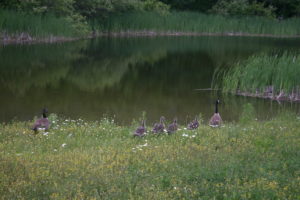 know I have to stop here as someone is probably getting upset and note that I am not saying you have to be….I’m trying to remind folks it is an option. AND that if you are going to talk about the warrior path, maybe do learn something about the warrior path because otherwise you sound like a damn willfully ignorant fool, and, yes, go off and get steamed about that if you don’t want to maybe rethink anything, but I’m not going to spend time arguing about it)
know I have to stop here as someone is probably getting upset and note that I am not saying you have to be….I’m trying to remind folks it is an option. AND that if you are going to talk about the warrior path, maybe do learn something about the warrior path because otherwise you sound like a damn willfully ignorant fool, and, yes, go off and get steamed about that if you don’t want to maybe rethink anything, but I’m not going to spend time arguing about it)
Or they are told that they can only be a warrior by joining the military or becoming a cop, as if these modern imperial institutions remotely resemble the warrior bands who served Her in the past at any time. Some try to define “warrior” as only those who fight for what ever they consider a “good cause” when, well, there’d be nothing to fight for if that were the case and that is again a completely modern Western concept to begin with. Meanwhile others will immediately say that “there are different ways to be a warrior, it doesn’t mean fighting, it can mean anything you want it to”… which amounts to it having no meaning at all. Which then makes it mean nothing. So either the word “warrior” means one modern concept or another or it means nothing at all. But none of these responses is accurate… but I feel I covered that quite a lot on this page, so if you’ve not read it, please do (it’s sort of the crux of this whole project, along with this page) I might rehash some here in the future but probably not in this post.
I will have to say that the frequent phrasing of “She calls more than just warriors” or “She is more than just a Warrior Goddess” is especially insulting. Oh, I know, you’re going to say that you don’t mean it “that way,” you mean there are “more options of paths, that warrior isn’t the only one” or something like that. Except often the phrasing is often very precisely saying that warriors are “just” warriors and others paths are “more.” This is also usually marked with things like, “She not just a Warrior Goddesss She’s also a Goddess of prophecy, cattle, sovereignty, victory, protection, strategy….” Now those last two should really make anyone laugh, because who does not get that things like “victory,” “protection” and “strategy” are fucking part of warriorship? Well, I can think of at least three or four people and, apparently, all their readers. I get “sovereignty” because they seem to think it’s about modern “personal sovereignty” rather than “kingship” which, btw, is questionable anyway. But I have, after all, already written an entire rather lengthy essay noting how everything “else” The Morrígan and Her Sisters are comes right back to them being War Goddesses. (that would be “Musings on the Irish War Goddesses” in By Blood, Bone and Blade: A Tribute to the Morrígan btw) There is more to being a warrior than fighting.
This relates to another phrase I find problematic, when someone notes that “as a warrior I make a good ____.” But, because they are shunning the path, they are not making a great ____ as a warrior. They are maybe making a great _____ in and of itself, I couldn’t tell you, but they are not making a great warrior _____. They are useless to warriors, because they are not warriors, they do not understand or want to understand the path. They are often demonstrating this by their lack of understanding what warriorship is (with their modern, narrow minded definitions) or understanding warrior stories by interpreting them without considering what warriorship meant or understanding.
So, I will say, as a warrior, I make a good researcher and, hopefully, at least an okay writer. I’m kind of a crappy personal trainer by industry standards, but that’s because I hate the industry standards and I want to be a trainer for those who also hate them. But my understanding of what I am researching and writing about has grown only because I have pursued a warrior path. The way I train myself, and others who are on this path, physically is also because of learning what it takes on this path (I do train others, but I need them to help me understand what they need). To say “as a warrior” here really has to mean you are a warrior and that that other thing is a part of being a warrior. Because it is. Especially when it comes to rebuilding the sort of warrior cultus that was part of Early Irish culture and, essentially, not part of the culture but a subculture in itself. If you’ve seen my outline for a training program, then you actually already knew there were many ways to be a warrior. No one is going to be great at all these things, no one is going to spend a lot of time on every one of them (although a taste of each is recommended). But warriors are a lot of things, it’s required to create a fían (I prefer to use cúanairt “pack” for a modern group, as it was less frequently used and has fewer alternate later definitions…and I like anything that brings us back to the wolfishness) that members would have different strengths and weaknesses. It’s not an army, it’s a pack.
Again, this isn’t saying anyone has to be a warrior. This is about trying to 1) address is the lack of warrior voices when it comes to modern service to the Morrígan. And 2) to try to counter the very negative, even if the negativity is unintentional, voices that may actually hamper someone feeling called to this path. And to try to correct the fact I’ve been rather silent myself for too long. I’ve enjoyed the quiet, but it always eventually leads to me being beaten about the head because quiet is not what I signed up with the Morrígan for.
So, yes, She may be calling more non-warriors than She is warriors, great do your thing. I just know that when I was called this was very specifically what I was to do. But, you know, nearly 35 years ago now, I certainly had no place to truly turn to find out what the fuck the warrior path was. I have stumbled a lot. I have gone down wrong paths (like many female and female-presenting undiagnosed autistic kids, I was raised to be a people pleaser, so I would often get into group situations where I felt expected to wear many hats, so many that the “warrior”… for that matter the “me” one…. often got buried, but I am getting better about that). It’s taken me a long ass time to really get what this is about, really only through the past 10 or 15 years. But it’s funny, at nearly 60 I still feel like a fledgling and it’s hard to see me in the teacher role. But my onw issues with that role should not mean that those being called to be warriors no available guidance. I hope there will be more voices, though.
There is so much more I could put here. But I am hoping instead to use this as a jumping off point for future posts. I hope to “see” you soon.
See also: The Morrígan Calls Warriors 2: But I’m Not Cut Out To Be a Warrior
If this was helpful to you or you just want to support my writing efforts, please, ![]()
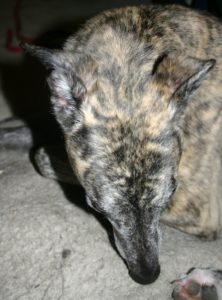 **UPDATE: I realized I should update that we were unable to save our Gráinne. The lymphoma was just too aggressive, she went down hill very quickly and had some sort of episode involving either a lesion or a blood-clot to the brain. She regained her ability to walk after the first one, but the vet was clear that nothing could be done. We planned to take her for her last trip a few days later, but she had another similar episode and we took her to an emergency vet in the middle of the night. We probably do not have to mention that we are devastated as is Gleann. **
**UPDATE: I realized I should update that we were unable to save our Gráinne. The lymphoma was just too aggressive, she went down hill very quickly and had some sort of episode involving either a lesion or a blood-clot to the brain. She regained her ability to walk after the first one, but the vet was clear that nothing could be done. We planned to take her for her last trip a few days later, but she had another similar episode and we took her to an emergency vet in the middle of the night. We probably do not have to mention that we are devastated as is Gleann. **
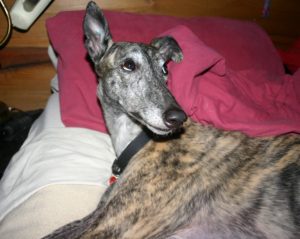 She could have years more with this, it is devastating that we may have to lose her just because Aaron broke his leg!
She could have years more with this, it is devastating that we may have to lose her just because Aaron broke his leg!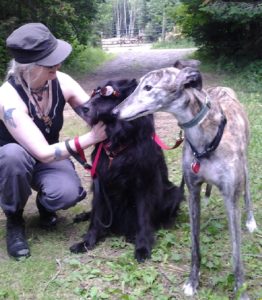 She has had a stressful year, losing Sach was a blow to her, I know. She was stressed as we took care of Gleann’s situation. I feel like we had just gotten to the point where we could all relax and enjoy time together when she got really sick. I don’t want this to have been her last year! I want her to get better, which she has a very good chance of if we start treatment this week, and have a couple of relatively happy years. She just turned 7, she needs more time!
She has had a stressful year, losing Sach was a blow to her, I know. She was stressed as we took care of Gleann’s situation. I feel like we had just gotten to the point where we could all relax and enjoy time together when she got really sick. I don’t want this to have been her last year! I want her to get better, which she has a very good chance of if we start treatment this week, and have a couple of relatively happy years. She just turned 7, she needs more time!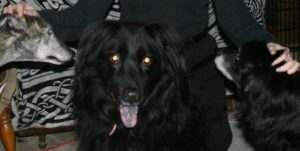
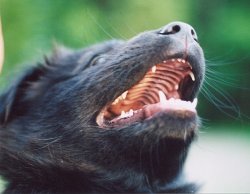 He was just weeks old when he came to live with us, all teeth and growls and unruliness, and a few weeks later we did our Lùnasdal/Là Fhéill Mhacha. Almost as soon as we got there Gleann started running as fast as his little legs could take him deiseal around the fire pit. We would get him to stop, but as soon as let go he’d just start running again. Through the whole ritual. With a break for shortbread.
He was just weeks old when he came to live with us, all teeth and growls and unruliness, and a few weeks later we did our Lùnasdal/Là Fhéill Mhacha. Almost as soon as we got there Gleann started running as fast as his little legs could take him deiseal around the fire pit. We would get him to stop, but as soon as let go he’d just start running again. Through the whole ritual. With a break for shortbread.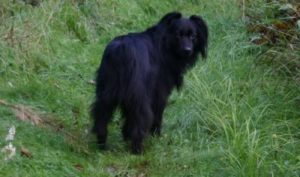
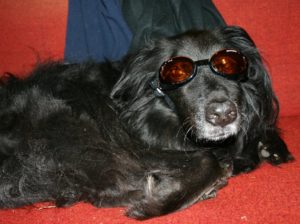 And so,
And so, 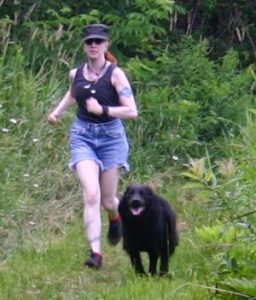 These workshops are, after all, directly related to the sort of connections that my relationship with Gleann and my other dogs represent. I have one that is very basic for those just starting out and that might be of interest to those not on the Outlaw warrior path to help understand where it can fit in modern Gaelic Reconstructionist Paganism and maybe open their own traditions to those on this one. I have varying degrees of exploration for those on the path, including a deeper look at being wolf. I also have a broader look at animals in the cultures that goes beyond the usual symbolic focus most resort to into where practicality, actually living and relying on these animals, led to the symbolism and how it can lead back to real relationships with living animals. And a fitness one (provided I am able to renew my certification in time).
These workshops are, after all, directly related to the sort of connections that my relationship with Gleann and my other dogs represent. I have one that is very basic for those just starting out and that might be of interest to those not on the Outlaw warrior path to help understand where it can fit in modern Gaelic Reconstructionist Paganism and maybe open their own traditions to those on this one. I have varying degrees of exploration for those on the path, including a deeper look at being wolf. I also have a broader look at animals in the cultures that goes beyond the usual symbolic focus most resort to into where practicality, actually living and relying on these animals, led to the symbolism and how it can lead back to real relationships with living animals. And a fitness one (provided I am able to renew my certification in time).
